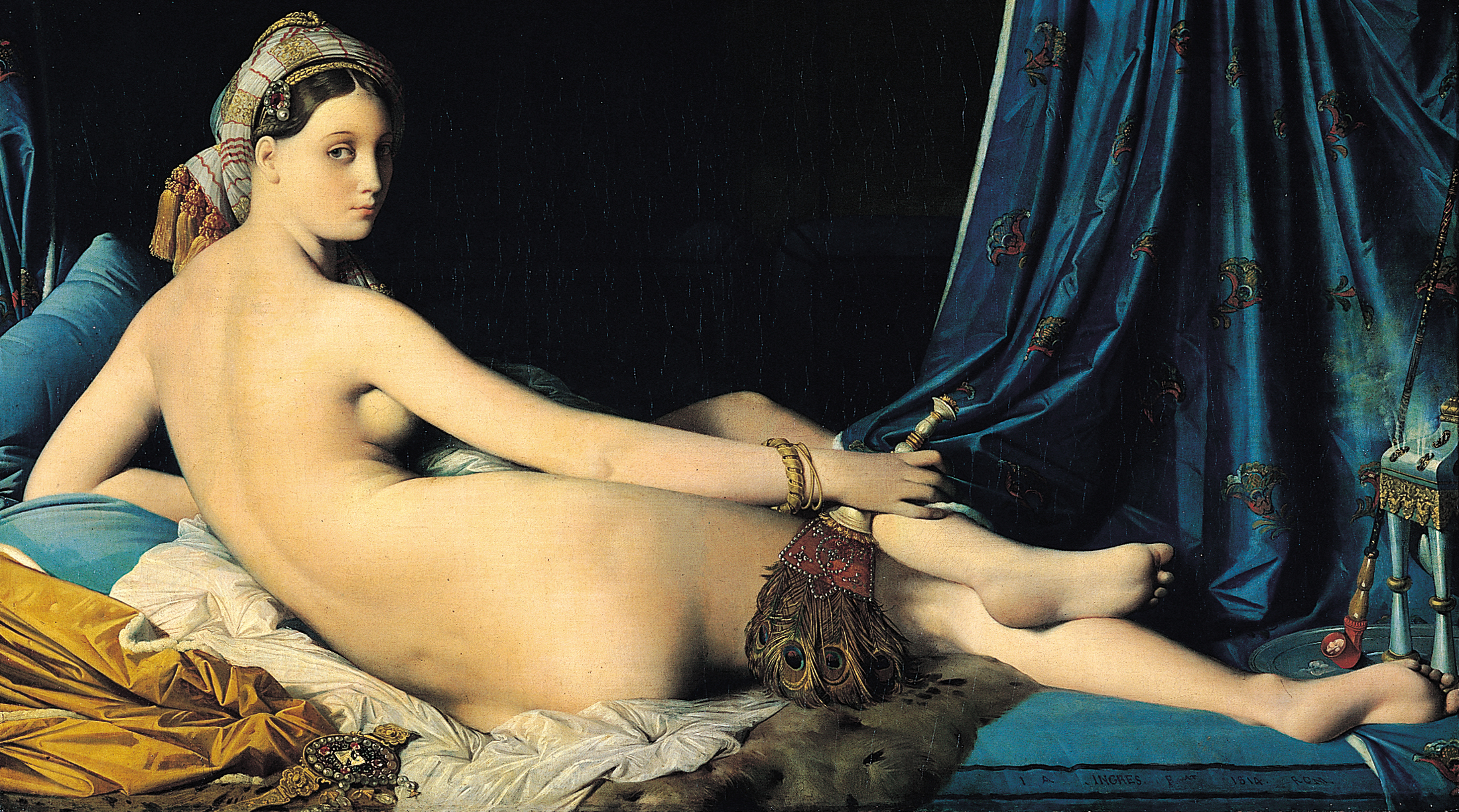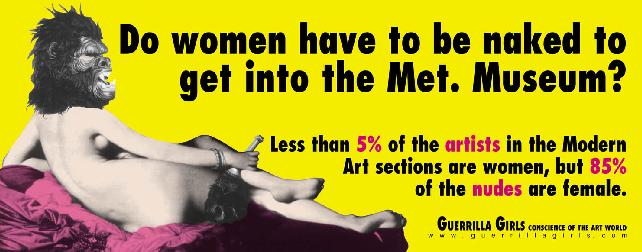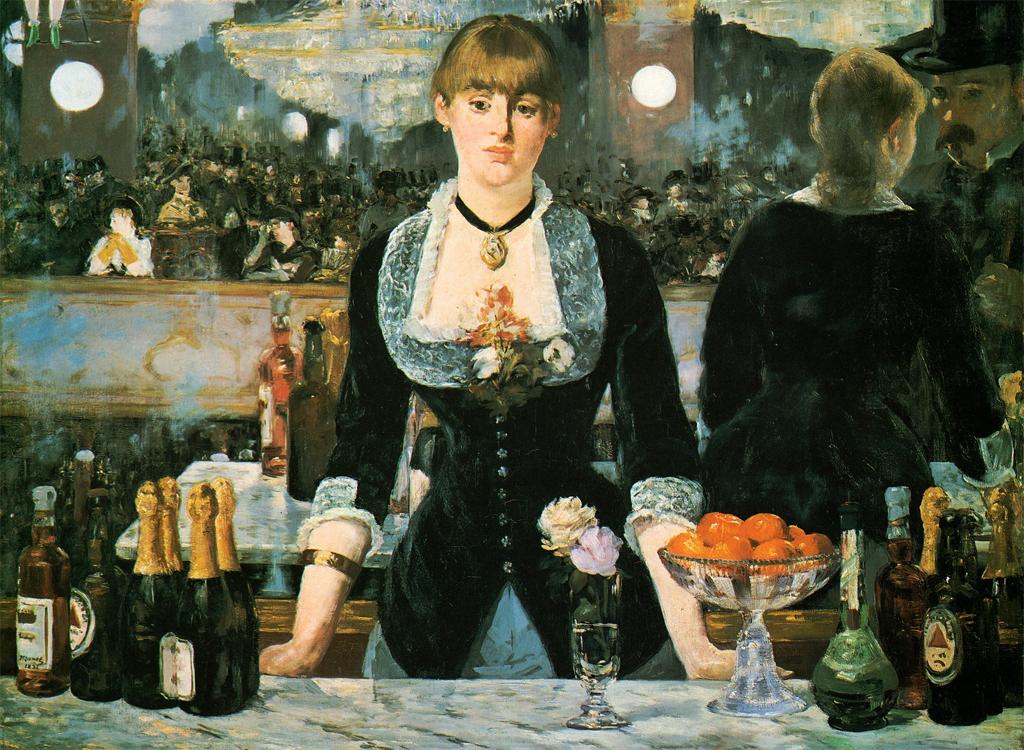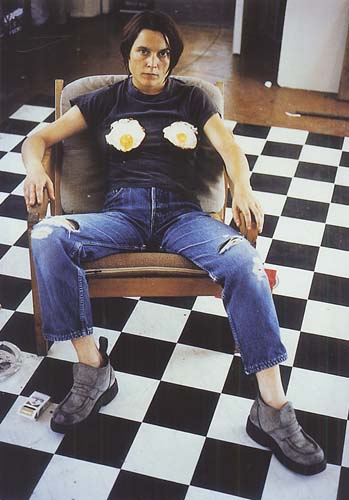Men look at women and women internalise the gaze. They internalize this habit of looking at themselves and how other women are presented in the media.
Hans Memling - 'Vanity' 1485
The artist painted her out of pleasure, but the use of the mirror shows that she is looking at herself.
The device of the mirror occurs in contemporary advertising all the time. The use of the mirror allows you to look at the woman without feeling like she knows you're watching, almost spying on her.
Alexandre Cabanel - 'Birth of Venus' 1863
We are left as the viewer to regard the naked body uninterrupted. No challenge for our gaze as the woman isn't looking back at you. She doesn't know you're looking. We are invited by the artist to gaze upon the figure and so does the woman herself in the painting.
Sophie Dahl advert for Opium
Deemed to be too overtly sexual with the hand on the breast and the naked body. So they turned the advert on it's side when it came to publishing, which changed the emphasis of the picture onto the face rather than the body.
Flirtatious look in her eye makes you feel as though you are invited to look at her.
Manet - 'Olympia' 1863
Example of the slight difference in the pose to 'Venus of Urbino' as there is a difference in the woman's gaze. She is looking us in the eye directly, so there's a challenge to the gaze. The hand position is significant as there is a definite position of the hand to stop you from viewing that part of her body. The woman in the painting is actually a prostitute / cortisone - rather than a goddess figure she is a modern nude.
Ingres - 'Le Grand Odalisque' 1814
Recreated by The Guerilla Girls to challenge the classic painting.
Manet - 'Bar at the Folies Bergeres' 1882
Offers a skewed perspective as the mirror behind her reflects her back but not in the way it would be in real life. We are actually put in the position of the painter himself as you can see him in the painting. She has this look of exclusion as she isn't a part of the Paris society in the background.
Jeff Wall - 'Picture For Women' 1979
Pastiche of Manet's painting, but with a focus on the camera rather than the painter. Wall has separated himself from the female figure. The complex use of space refers to the use of space in Manet's painting.
Coward, R - 'The Look' (1984)
"The camera in contemporary media has been put to use as an extension of the male gaze at women on the streets"
Women in advertising often wear sunglasses as the gaze cannot be returned. You can look at her without feeling that you're being looked back at.
Eva Herzigova, Wonderbra Campaign, 1994
Normalisation of the unclothed female body in the street. The woman is looking down so there is no return of the gaze so you can survey her body.
Coward, R - 'The Look' (1984)
"The profusion of images which characterises contemporary society could be seen as an obsessive distancing of women... a form of voyeurism" - when reviewing the film 'Peeping Tom' 1960. He films women in the moment of death and murders them. The objectification is at an extreme.
Males are objectified in advertising just as much as women. However, men usually return their gaze.
Marilyn: William Travillas dress from 'The Seven Year Itch' 1955
Use of Freudian theory to study spectatorship in Hollywood cinema. Looks at the ways films are made in terms of the male gaze. Looks how bodies are chopped up by the camera and looks at the framing where certain parts of the female body would be shot in close up in a sexual scene.
She notes that lecture theatres and cinema auditoriums are darkened rooms where you can fantasise and admire the film footage. Can be argued that they are sexually charged environments.
"pleasure in looking has been split between active / male and passive / female" (Mulvey 1992, 27)
Artemisia Gentileschi - 'Judith Beheading Holofernes' 1620
Unusual that females have more active roles in mythology and aren't usually beheading or committing murder.
Pollock, G (1981)
Women have generally been left out of Art History and generally the artist as a genius is always given to a male figure. Women are 'marginalised within the masculine discourses of art history'
Cindy Sherman - 'Untitled Film Still #6' 1977-79
The meaning of the work doesn't completely lie with the maker of the work. Similar to Sophie Dahl's work where the woman is in a reclining position but the image has been turned upright so that the focus is on her face.
Barbara Kruger - 'Your Gaze Hits The Side of My Face' 1981
Reference to why can't we look at the female body?
Sarah Lucas - 'Eating a Banana' 1990
Challenging the gaze. Refers to the sexual connotations of the banana
Sarah Lucas - 'Self Portrait With Fried Eggs' 1996
Slightly humorous but at the same time a serious comment on the kind of language used to describe women with flat chests. You can't look at her without feeling a challenge to the gaze.
Tracey Emin - 'Money Photo' 2001
Challenging the criticism that she came across as her work not being real or genuine due to how much money she was making. Came across as a prostitute.
Criadio-Perez argued that as the Equality Act 2010 commits public institutions to end discrimination. She received up to 50 threats a day via Twitter including threats to rape and murder. Although she reported the abuse, police lost evidence and she was forced to delete her account.
Campaign to represent women on British currency as Elizabeth Fry on the £5 was scheduled to be replaced by Winston Churchill. Criadio-Perez stated that if she were to be replaced, they should use another positive female role model from history instead.
Social Networking is used to perpetuate the male gaze / the gaze of the media.
"Like if you hate your body </3" Facebook picture, receiving thousands of likes.
The body is broken into fragments - could be any female. Plays on teenagers body consciousness, potentially carrying those perceptions into adult life.
Susan Sontag (1079) - 'On Photography'
'To photograph is to appropriate the thing photographed'
This relates to the paparazzi photograph of Princess Diana. If the shots didn't exist, the market wouldn't be there. A perpetuation of that cycle and need for paparazzi images - the desire to see the mask of the celebrity lifted and to see them as ordinary people.
Reality TV appears to offer us the position as the 'all seeing eye' - the power of the gaze. Allows us a voyeuristic passive consumption of a type of reality. Editing means that there is no reality. Contestants are aware of their representation (either as TV professionals or as people who have watched the show).
Peter Weir - 'The Truman Show' (1988)
Big Brother seems to offer the equality of the sense that it's not just female bodies to be gazed upon, but male bodies are gazed upon as well. The gaze at it's worst as they can't see us but we can see them all the time. We are the Peeping Tom.
Looking is not indifferent. There can never be any question of 'just looking' - Victor Burgin (1982)
+Vanity++1485.jpg)




















